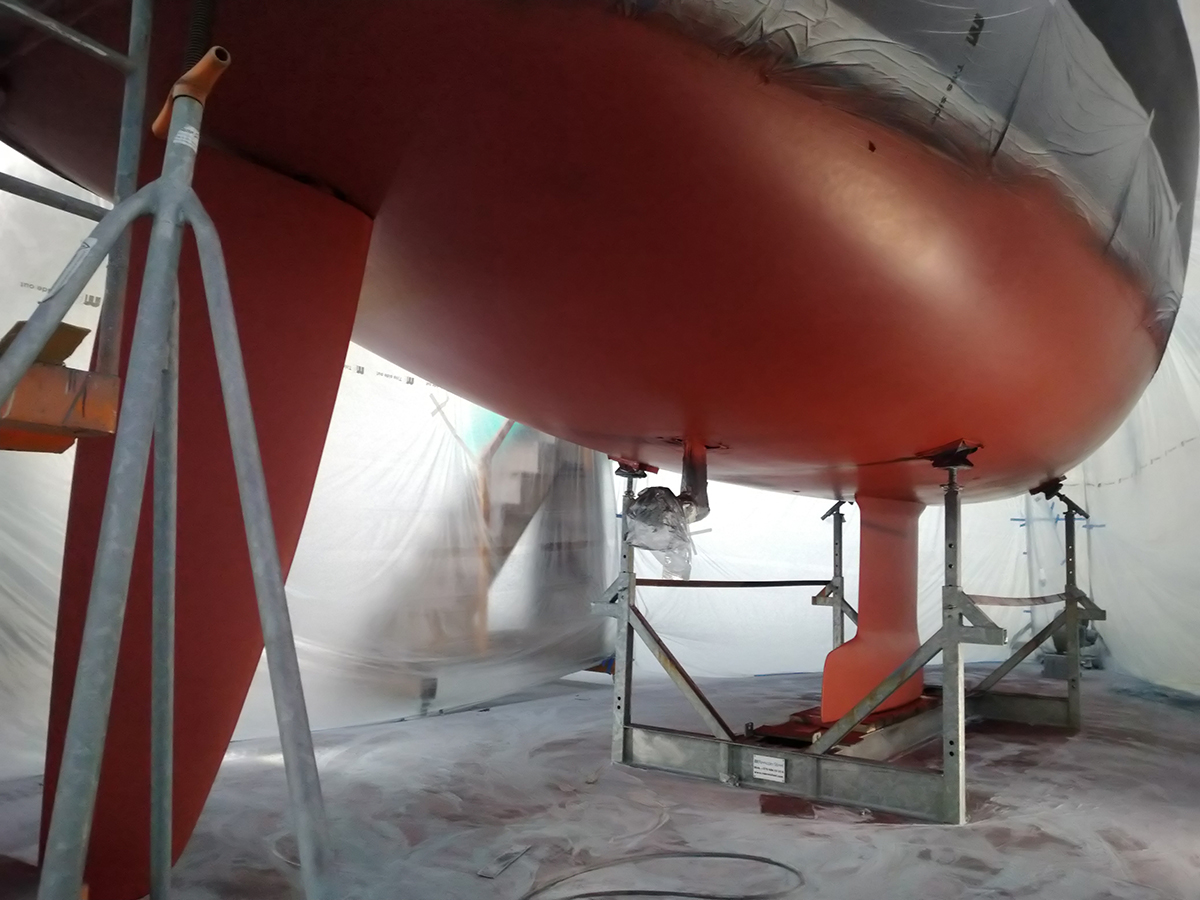Maintenance of underwater surfaces
The fiber and gel coat structures commonly used in boats are not watertight. Even in new boats, the waterproofing of the bottom must be taken care of, before applying the antifouling paint. If this is not done, then especially salt water will find its way through the gel coat all the way to the boat’s fibrous structure over the years. When this happens and damage occurs, the repair work is usually quite extensive. This kind of damage can be prevented by using a waterproof coating. In this case, the only durable solution is two-component epoxy paints, the structure of which prevents moisture from penetrating into the frame structure of the hull.
Even if the bottom of the boat, when new, is properly coated, it is good to check the condition of the structure every 10-15 years. But often the antifouling treatment is performed annually, which can not be recommended. As a result the film thickness of the antifouling coating becomes unnecessarily thick and the film becomes in places brittle and cracked. Properly applied antifouling treatment will remain in working order for up to six, seven years, after which the treatment can be renewed, provided the structure of the waterproofing or epoxy primer still is in a good condition.
It is good, every 10-17 years to do a thorough basic maintenance. In that case, the bottom of the ship shall be blown clean with broken glass, metal slag, or sand of varying roughness, depending on the construction materials available on the site. The blowing reveals air bubbles under the gelcoat and/or other corrosion over the years. If the structure of the coating is found to be in good condition, the handling of fiberglass boats can be accomplished by patching some “pin hole” holes and finishing the bottom to spray condition.
An epoxy primer is sprayed onto the substrate as a high pressure spray. This technique is based on the fact that the high liquid pressure in the tool nozzle breaks down the coating material into a uniform spray. No air is used as a driving force for the spray and all material is only the bottom for good. Therefore, the usual paint dust is not generated. A thick flat mat is provided on the bottom to protect the structure of the frame. In such a flat coating mat, the molecules are allowed to intertwine with each other, as is the case in a two-component product. The end result will then be, when correctly executed, part of the solid structure of the hull. If the epoxy coating is made manually, for example with a roller, then the end result is a structure similar to puff pastry, which, done ten times, does not replace the epoxy film sprayed only once. Spraying is also such a fast way of working that the drying of the material can be better controlled. The best time to spray the antifouling layer onto the epoxy coating is when the epoxy coating has reached the desired degree of evaporation and toughness. In this way, the best possible adhesion is obtained for the entire structure, and the strength of the film in both the base layer and the antifouling becomes uniform. The result of doing so is that the durability can last 10-15 years or maybe longer. The antifouling paint can be washed clean every year, maybe sanded lightly, but it is not advisable to paint a new coat of antifouling paint before it has worn out, perhaps after every six to seven years.

